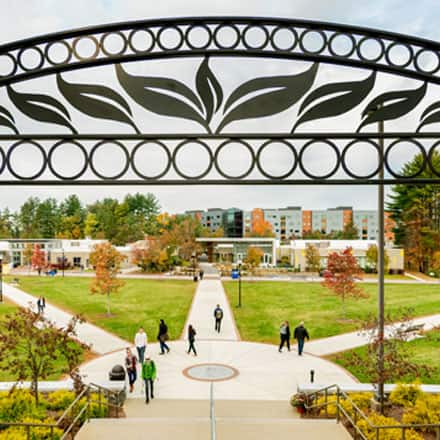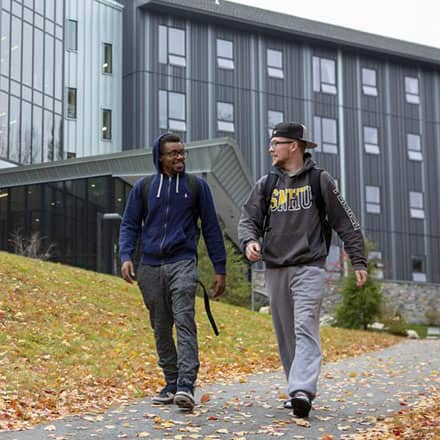Improved Credit Transfer Practices Linked to Persistence, Success
When there are more than 40 million Americans with some college and no credential, the process of transferring credits must be seamless, streamlined and without barriers that learners are often forced to navigate on their own – sometimes to the tune of thousands of dollars in added costs. A new white paper from The Center for Higher Education Policy and Practice (CHEPP) at Southern New Hampshire University (SNHU) argues that the current higher education system often fails to fully accommodate the diverse pathways students take to complete their education and that “transfer and credit for prior learning (CPL) offer great potential to reduce costs and improve equitable access to the many benefits of a college degree.” The report dives into the costs of today’s college credit transfer system, and the mindsets and practices that can reduce the barriers and improve degree completion rates.
The report titled The Costs of Today’s College Credit Transfer System for Learners and the Mindsets and Practices That Reduce Them highlights the need for institutions to create systems and practices that help reduce costs while aligning institutional and student interests. The paper presents case studies and learner stories from SNHU and other institutions that have implemented transfer-friendly practices and public transfer partnerships. Like SNHU, where 64% of its learners transfer in with prior credit, the other institutions in the case studies have demonstrated that a focus on flexibility, dedicated resources and partnerships can lead to higher retention and completion rates for transfer students.
Significant challenges many students face when transferring credits which lead to increased costs and delayed degree completion include:
- Inefficient pathways and misaligned courses due to lack of advising and unclear information about credit transferability.
- Costly and lengthy credit evaluation processes, resulting in students registering for unnecessary courses.
- Rejection of credits or failure to apply them due to institutional decisions and policies.
Additional costs for learners include enrollment costs, human costs, and opportunity costs. For example, the research shows learners transferring to public four-year institutions may incur an estimated $13,081 in additional expenses, while those transferring to private institutions may face an additional $26,396 in costs.
Like SNHU, the other institutions profiled in the report are helping students succeed by being more open to accepting transfer credits and adopting practices aimed at reducing costs to students. These methods prove successful and have not led to lower tuition revenue or students struggling in advanced courses. Instead, by aligning policies with what students need, these institutions are seeing more students enrolling, staying in school, and graduating.
What works at SNHU:
- Culture of acceptance
- Ample staffing and support to reduce learner burdens.
- Flexibility
- Learner Insights
- Prioritize the learner experience.
- Advisors are the “secret sauce.”
- Cost-efficiency matters.
SNHU students like Tanesha, a working mother seeking flexibility to complete her degree, shared that SNHU’s commitment to student advocacy and success stood out to her and the help from her advisor made the process seamless.
“The advisors took a lot of the responsibility that a student would typically have to do on their own, of gathering transcripts, reaching out to old schools, and getting all this information; they took on that responsibility to help alleviate the process for [the] incoming student … It showed the commitment to the success of the student,” Tanesha said.
At SNHU, learners who transfer in more credits, up to 90, have higher year-over-year retention rates. Many SNHU learners have unique credit transfer stories, with more than 1 in 4 having enrolled at 3 or more higher education institutions before coming to SNHU. One recent graduate, Anson Owen, tried six different schools over 20 years before completing his degree. Throughout his college journey he struggled with housing insecurity, job instability, and health issues. After his wife became visually impaired, he became the sole earner for his family and is planning to use his degree to make a career change. Jeffrey Koutnik, a veteran and great-grandfather, graduated with his B.S. in Business Administration after starting his college journey more than 45 years ago. He is 64 and planning to use his new degree to advance his career at an Air Force base.
CHEPP’s report argues the transfer of credit should be a key strategy to improving economic security and social mobility because “it reduces costs for non-linear pathways to a degree, especially for historically underrepresented and underserved learners.” Non-linear pathways that include transferring credit “should be a more affordable and more widely accessible option, especially to those learners who have disconnected from higher education for some time and who have skills and experiences from non-traditional sources.”
To read the full report, visit CHEPP’s website.
Explore more content like this article

SNHU Celebrates Largest Fall Commencement

Government Shutdown Update for Military Students

SNHU Celebrates the Inauguration of President Lisa Marsh Ryerson
About Southern New Hampshire University

SNHU is a nonprofit, accredited university with a mission to make high-quality education more accessible and affordable for everyone.
Founded in 1932, and online since 1995, we’ve helped countless students reach their goals with flexible, career-focused programs. Our 300-acre campus in Manchester, NH is home to over 3,000 students, and we serve over 135,000 students online. Visit our about SNHU page to learn more about our mission, accreditations, leadership team, national recognitions and awards.

